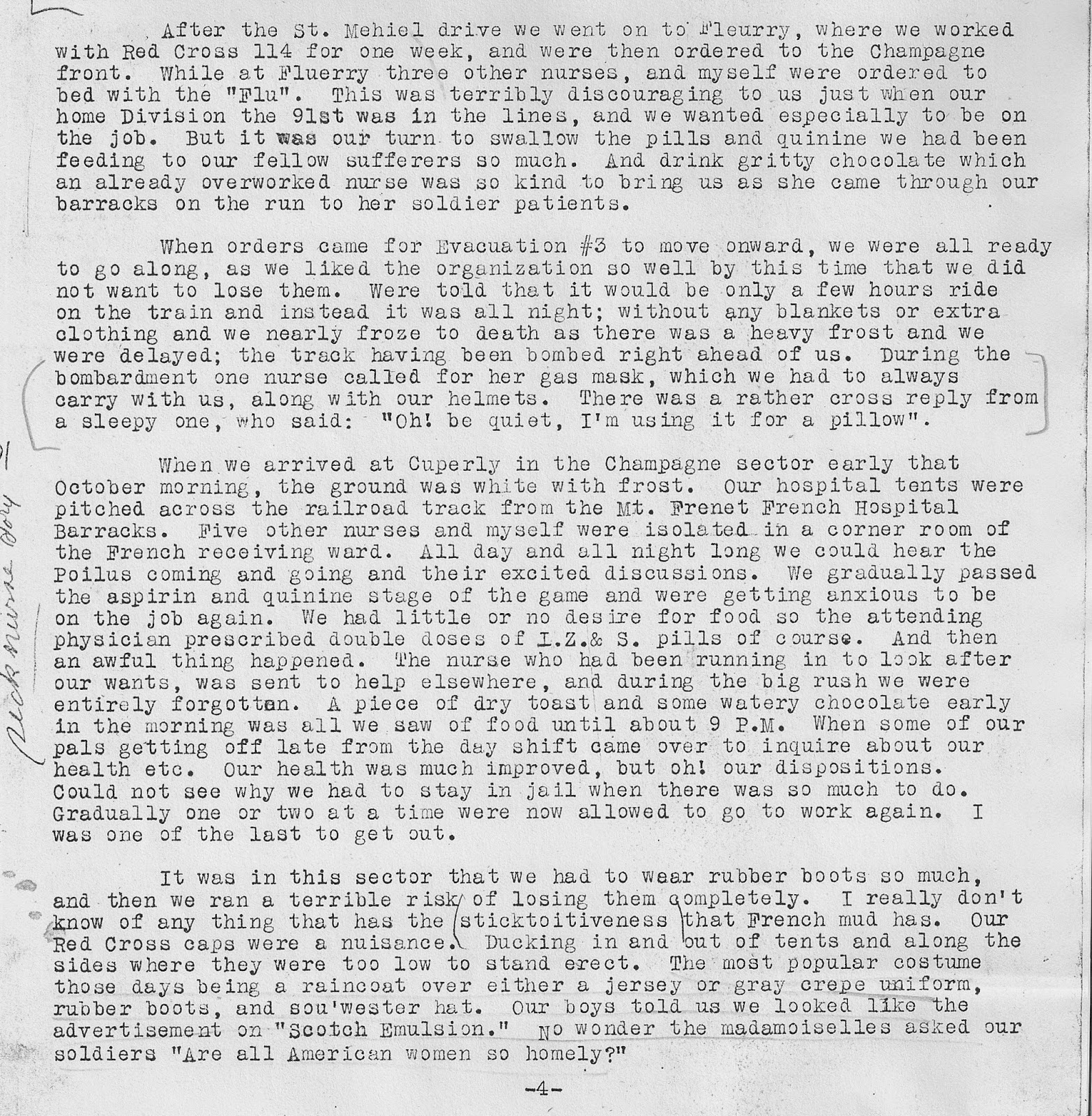In service with Evacuation Hospital #3 at Red Cross Hospital 114 near Fleurry, France, Leverman contracted influenza at a time when she felt particularly needed. "This was terribly discouraging to us," she recalled, because she "wanted especially to be on the job" during the fall Allied offensive. "But it was our turn to swallow the pills and quinine we had been feeding to our fellow sufferers so much. After a freezing nighttime train to the Champagne sector for service with the Mont Frenet Hospital, "five nurses and myself were isolated in a corner room of the French receiving ward" as they recuperated. "All day and all night long we could hear the Poilus [French soldiers] coming and going and their excited discussions," she remembered. When they had "passed the aspirin and quinine stage" of the disease Leverman and her colleagues were "anxious to be on the job again." But they needed to regain their strength and depended on a colleague to look in on them. "And then an awful thing happened. The nurse who had been running in to look after our wants, was sent to help elsewhere, and during the big rush we were entirely forgotten. A piece of dry toast and some watery chocolate early in the morning was all we saw of food until about 9 P.M." Then "some of our pals getting off late from the day shift came over to inquire about our health . . . our health was much improved, but oh! our dispositions." Leverman felt like she was "in jail" and was frustrated when there was "so much to do. Gradually one or two at a time were now allowed to go to work again. I was one of the last to get out."
Back at work, and given these conditions, it was no wonder that Leverman and her colleagues scrapped some parts of their official uniforms to get their work done and survive the rain and mud. She didn't wear the Red Cross cap, which she considered "a nuisance" when she had to duck "in and out of tents" and along the low sides.
 | ||
| Model Red Cross Army Nurse Corps Reserve Uniform, National Archives. |
 |
| Scott's Emulsion Cod Liver Oil. http://dustoffthebottle.blogspot.com/2011/04/scotts-emulsion-cod-liver-oil-bottles.html |




